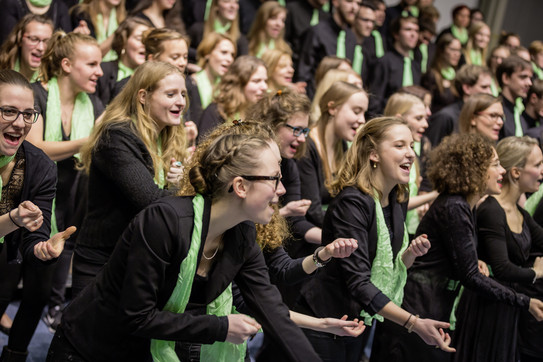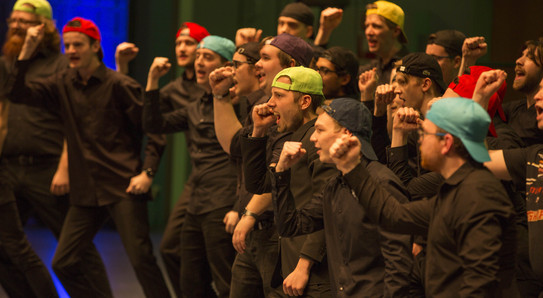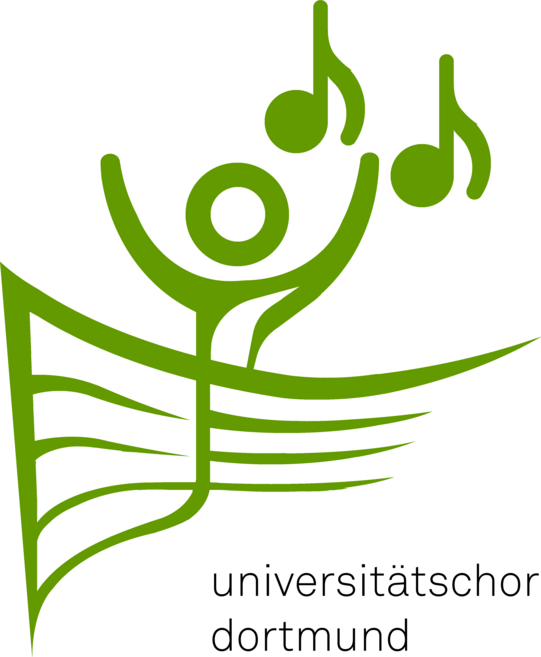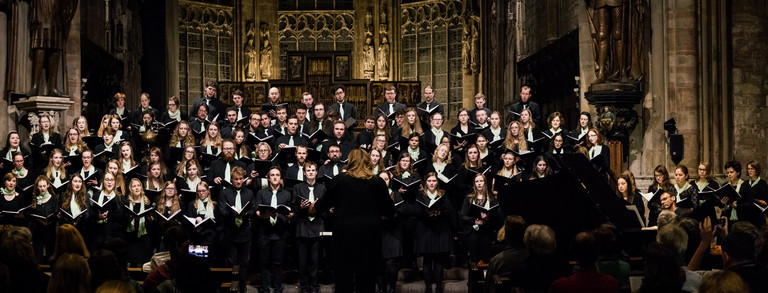Singing

Singing in choirs is an important basic module of the PerSona vocal room. Singing together holds a lot of positive potential that offers far more than just a meaningful balance to the energy-sapping daily routine. The fact that it is healthy and makes people happy is now undisputed.
But other effects are also quite beneficial for the success of studies or a successful working life. For example, regular attendance at rehearsals can teach discipline. Alongside this is the experience that willingness to make an effort pays off. Concentration and focus also improve.
Singing together also enables social learning, since the big goal, the flawless performance of a song or a successful concert, can only be achieved together with everyone. It depends on the personal commitment of each choir member, but this must always be adapted to the needs of the community.
After all, singing with others releases social bonding forces. During rehearsals, friendships are forged, new things are developed together - and usually with a lot of fun. The shared passion for singing creates a bond that makes the choir community grow together.
This and much more speaks for lifelong joint singing. With the vocal room PerSona, a singing offer is to be established at the TU that offers as many members as possible the option of discovering the beneficial potential of singing for themselves. The aim is to offer a diverse range of activities that takes into account the heterogeneity of the TU.

University Choir
The TU Dortmund University Choir represents the TU and PerSona to the outside world. Its programme is diverse. Regular cooperation with internal and external orchestras and bands is part of its profile. Its membership is limited to 150.
More info here:



